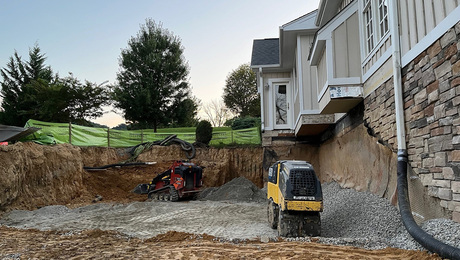I would not glue anything to the sheet metal. Cementious Backerboard Units (“CBU’s) are designed to be nailed and/or screwed to a substrate. Slapping some mastic on sheet metal and pressing a 40lb CBU on it will result in nothing but a mess. Mastic almost never cures, and remains pliable. It is fairly worthless for any tile application that I know of.
You must design the front of the unit so the the CBU can be nailed or screwed into framing. If that is impossible, then I would design the unit so 3.4lb diamond lathe can be applied to it, and the area floated with wall float. I would not want to apply the tile directly to the sheet metal either.
Most thinset manufacturers have a quality thinset which is strong and resists heat. Laticrete is one and my typical installation is using an additive called 4237 which forms a high strength and temperature resistant bond. Latipoxy is another with a very high resistance to heat. Contact Laticrete at http://www.laticrete.com/
Boris
“Sir, I may be drunk, but you’re crazy, and I’ll be sober tomorrow” — WC Fields, “Its a Gift” 1927


















Replies
Greg-- I can't say that it is recommended by any manufacturer but I have used PL400 for this application with good results.
Beware of expansion also. I tiled around a masonry fireplace and even at that, there was enough expansion to crack the grout lines and a tile.
We did exactly what you are talking about. Used a Heatilator woodburning radiant unit with a fire opening of 24 high by 36 wide, but when the unit was in before backer or tile, had about 3 inches at the sides and 12 inches or so at top of black sheet metal. Tiled using porcelain 12x12 units, getting the joints to lay right to the 24x36 fireplace opining. We installed the unit so the sheet metal came flush to the framing face, then did the sheeting of the face with 1/4" cement board. Each board section that lays over sheet metal is 'cantilevered' and is screwed to studs for its major portion to help support the portion that is glue-fastened to the sheet metal facing of the Heatilator unit. Used a couple tubes of GE's RTV400 silicone rubber adhesive/sealant as the glue to bond the cement board to the sheet metal, after belt sanding the paint job on the steel to promote adhesion. Held back the edge of the cement board by 1/4" from where the tile edge would come, and then used Rutland's Silicate Cement fireplace mortar tooled into the 1/4 x 1/4 joint under tile edge around sides and top of opening. Both the GE and Rutland materials are rated to perform at high temperatures. If you want to see photos email me at [email protected]
You boys are good . I have nothing to add, that sounds like excellent advice . Except what I have been doing for the last year, and that's call a manufacturer. They are good too when one is in doubt. My trouble on here is some don't know and they respond as they do. But as with the replies given here it is clear they know. Good job guys.